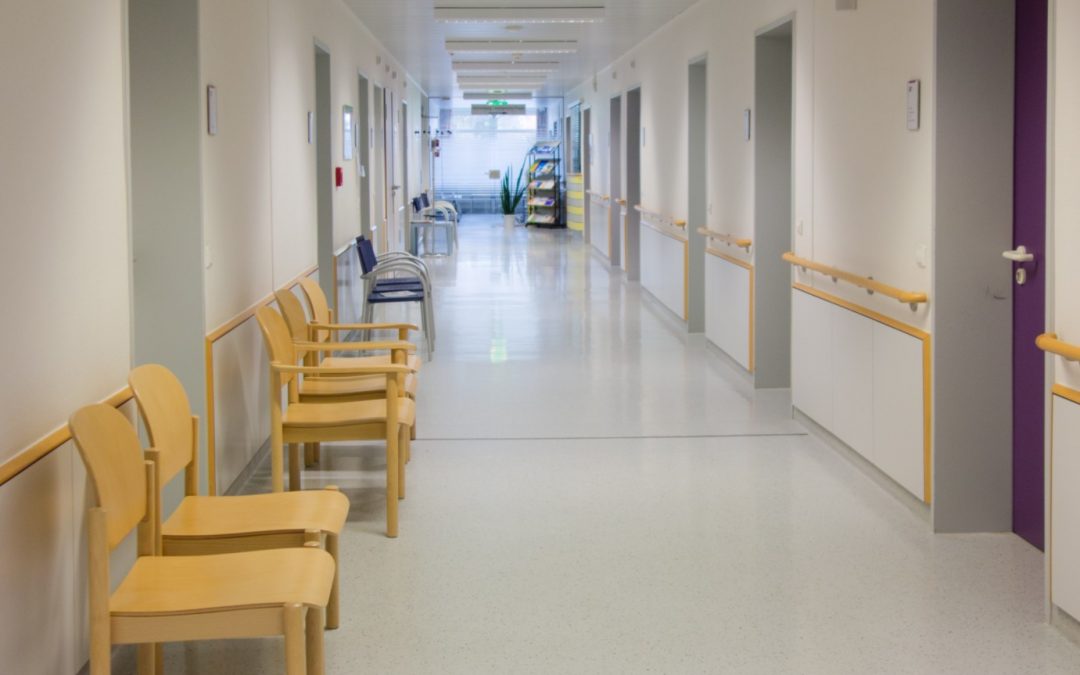Did you know 19% of hospital injuries result from floors, walkways, or ground surfaces?
It’s a good thing you’re looking at adding a high-performance hospital flooring.
Keep reading, and we’ll tell you why adding a fluid-applied floor coating will help you avoid being one of the statistics.
Benefits to High-Performance Hospital Flooring
There is a multitude of benefits to using fluid-applied coating systems for your hospital floor.
Pathogen control is essential when considering benefits to high-performance hospital flooring. Fluid-applied flooring offers a seamless bond to the concrete substrate, which allows for a better clean and no porous or crack-prone floors that are tough to clean.
Seamless, fluid-applied flooring eliminates the menacing pathogen-control risks that you find with a porous or crack prone hospital floor.
It’s no surprise that patient rooms, labs, OR’s and emergency rooms are exposed to biohazards that can threaten everyone in your hospital. The cleaning routines that take care of these biohazards can be very tough on regular flooring. High-performance floor coatings are very resistant to different chemicals and stains.
In a hospital, there is a constant hustle and bustle with nurses, doctors, and everyone else on their feet. Some flooring solutions reduce physical strain on workers. Don’t forget the ability to add an anti-slip floor coating to help with mobility around the hospital.
One of the main benefits of fluid-applied hospital flooring is maintenance and sustainability.
These types of floors don’t require a lot of maintenance. There’s no need for stripping, waxing, or buffing.
Can you think of another perk of low maintenance? Your custodial cost will go down. Fluid-applied hospital flooring can help you achieve some of the lowest life-cycle prices.
When choosing your flooring, you have to consider the initial price of material, the installation, and also the long-term costs. Once you look at all the costs, high-performance healthcare flooring is the best option.
Types of Rooms
The different rooms of a hospital may require other floorings. However, with new high-performance hospital flooring, you can check the needs of all places in one type.
The following areas can benefit from a fluid-applied flooring:
- Entrance areas
- Operating rooms
- Patient rooms
- Clinical areas
- Emergency room
- Cafeterias
Each room can have a well-designed floor aesthetic, as well as a durable and safe walking surface.
Polyurea Verus Epoxy
Did you know typically, floor coatings are most commonly done with Epoxy?
Epoxy is no longer at the leading edge of floor coatings. Now, polyurea coatings are taking over. Garage Force offers a polyurea garage floor coatings that are 20 times stronger than your average epoxy coatings.
Some of the other benefits of polyurea floor coatings include:
- Resistant to ultraviolet light damage, unlike epoxy coating that will fade or yellow
- A second layer is applied, resisting moisture from causing damage
- Polyurea cures extremely fast, allowing for fewer bubbles to form during the hardening process
- Impressive finishes that resist stain
- Significantly less installation time to install polyurea coatings due to the fast cure time
So, Are You Ready to Switch?
Are you ready to make the switch to a high-performance coating system to provide a durable finish for your hospital flooring?
We’re ready to help you lower your maintenance cost, provide a clean surface and so much more when it comes to your hospital floor; contact us today!
